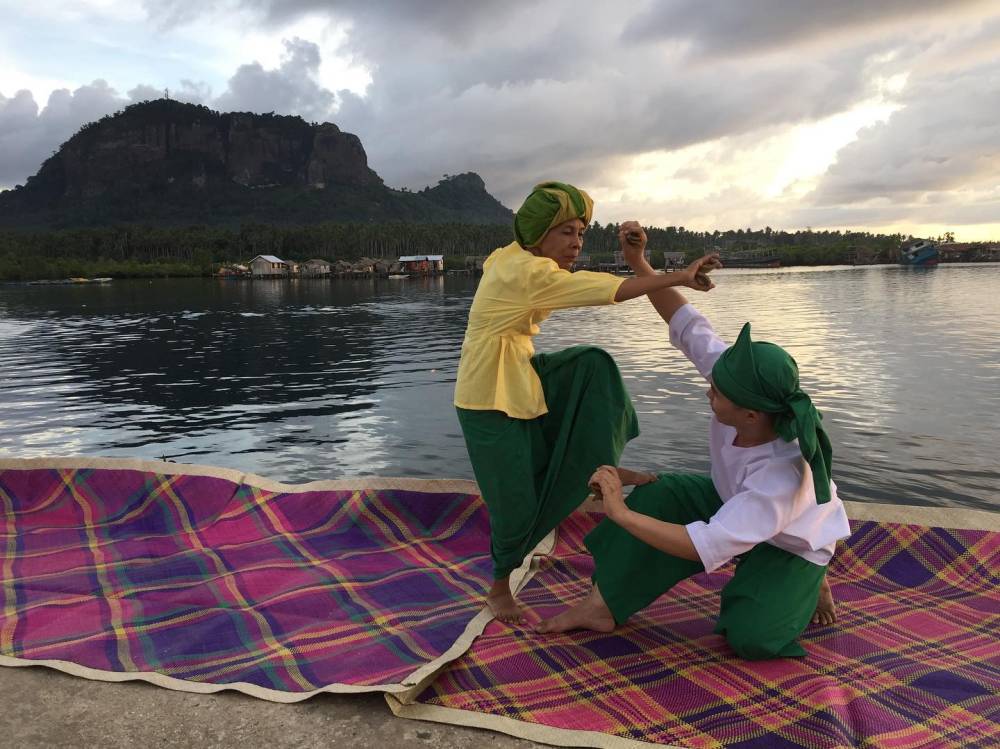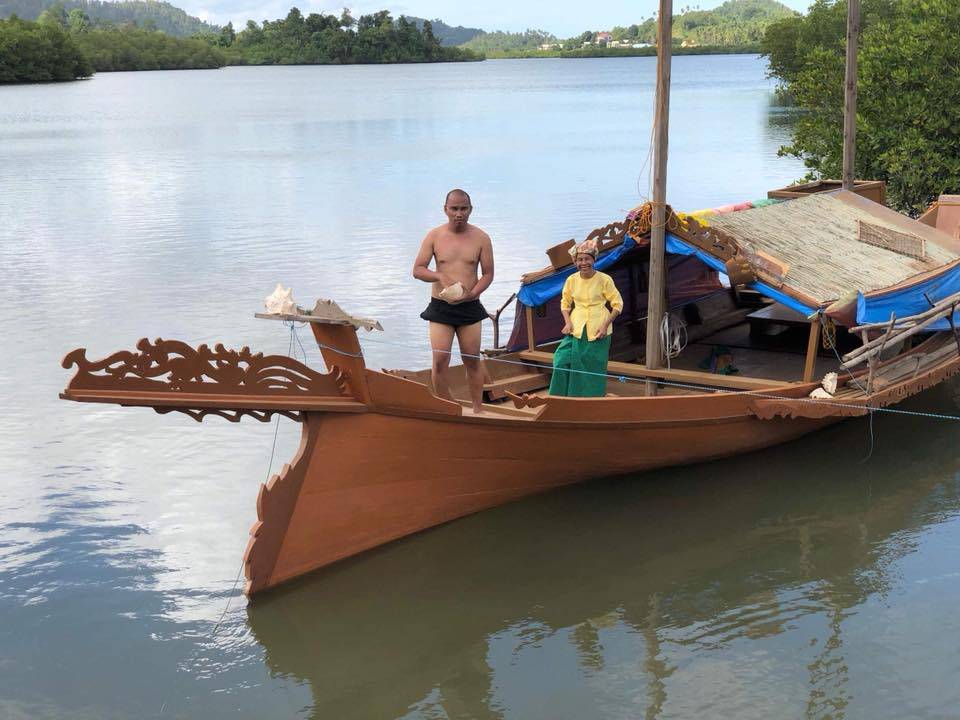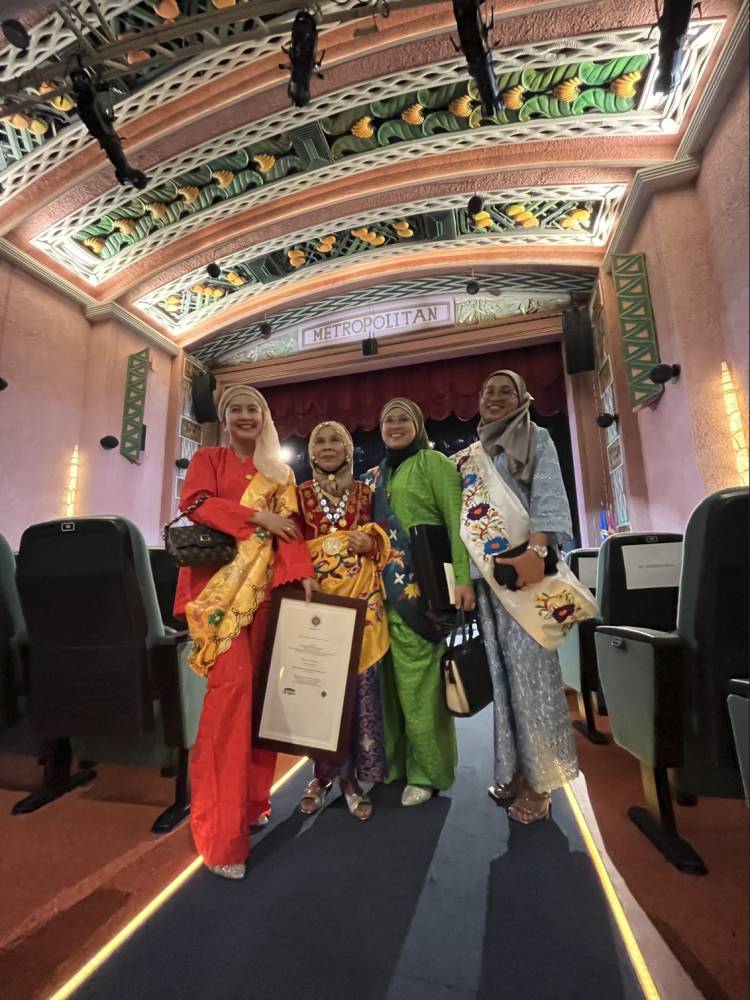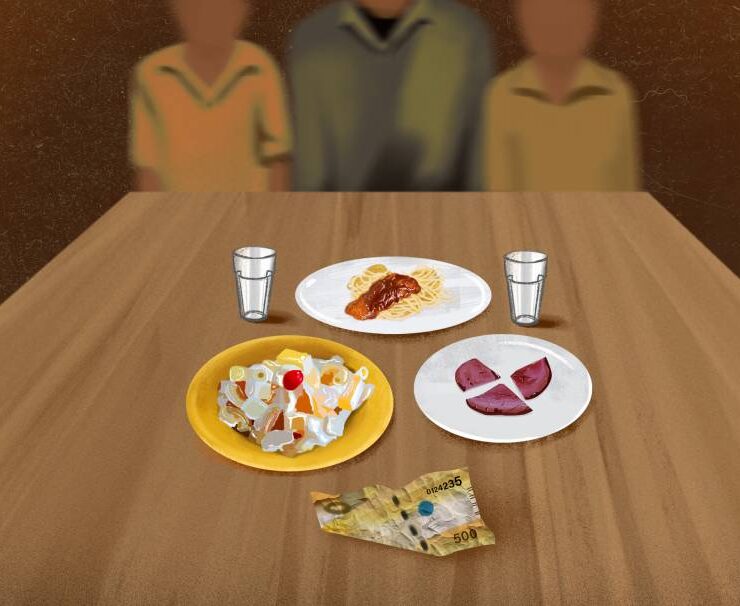‘Igal’ master continues to teach age-old dance

A weeklong documentation of Tawi-Tawi’s intangible cultural heritages (ICH) of boat making and igal seven years ago was the start of a living legend’s journey to national recognition.
That project was initiated by the International Information and Networking Centre for Intangible Cultural Heritage in the Asia-Pacific Region (ICHCAP) under the auspices of Unesco, in partnership with the National Commission for Culture and the Arts (NCCA). The latter did the documentation and the subsequent documentary series not only on igal, but also other ICH properties in other parts of the country.
Then 64-year-old Sakinur-ain Mugong Delasas was the focal point of the igal documentary as one of the most senior practitioners and cultural masters in Tawi-Tawi with decades-long practice.
Day in and day out, Delasas joined the NCCA documentary team in fieldwork and documentation not only of igal, but also the boat-building tradition of the province, specifically known to the town of Sibutu.
She made herself available for shoots conducted in Bongao, Sibutu, and Languyan municipalities and shared her knowledge and expertise for the public to know and appreciate.

Born in the town of Simunul and now residing in the provincial capital Bongao, she learned igal from community members and her mother, who taught her the different movements that mimic fish in their natural environment, waves from the sea, and birds gliding in the air.
Igal, the Sama word for dance, is called pangalay by the Tausug and pamansak or gandingan by the Yakan of the island of Basilan.
Apart from her mother, the great pangalay/igal scholar, practitioner, and conservationist Ligaya Fernando-Amilbangsa was also a contributor to Delasas’ mastery of her craft. Delasas is now regarded by her community as a danda pandey ngigal or igal expert.
When Fernando-Amilbangsa established the Tambuli Cultural Troupe (TCT) at the Mindanao State University Sulu (now Tawi-Tawi) College of Technology and Oceanography in 1974, Delasas joined in.
Writing for the Cultural Center of the Philippines (CCP) Encyclopedia of Philippine Art, her long-time friend Rosalie Matilac notes that Delasas was “among the dancers who mounted the theatricalization of these dances from the field,” that is, dancing on top of shoulder-borne bamboo poles.
“Because of her petite and slender physique, Mugong-Delasas was the ideal dancer to perform on top of the bamboo poles,” says Matilac.
Multi-awarded
During her time at TCT, Delasas was part of many productions, such as those done at the University of the Philippines Diliman and University of the East in 1975, at the CCP in 1976, and at the Music and Dance Festival of the Philippines in Catalonia, Spain in 1996.
Less than a decade later, she was appointed director of TCT, a position she held until around 2017.
While at the helm of the TCT, she directed notable performances such as the “Susulan Tawi-Tawi” at the CCP Complex in 2004 and the performance of TCT during the first Budayaw Festival of the east Asia growth area held at General Santos City.

In 2024, her alma mater conferred on her the Gintong Dolphin Lifetime Achievement Award for her work and dedication as an igal master.
The year prior, the state gave her the Gawad ng Manlilikha ng Bayan (Gamaba) for Traditional Performing Arts, which was officially conferred on her and eight other awardees last April 7 at the Metropolitan Theater in Manila.
Delasas is the second Sama awarded the Gamaba, after mat weaver Haja Amina Appi of Tandubas, Tawi-Tawi in 2004.
She is among the 17 total awardees from the Mindanao island group including Palawan, the most out of 25 total awardees from 1992.
According to the NCCA, Delasas “is known for spreading her expertise in the art performances where she emphasizes the need to keep all elements of the dancer and the dance in harmony.”
It adds that “Hadja Sakinur-ain has been dancing in time with the past, against the crosscurrents of the present, to the challenging irrepressible tides of the future.”
The commission likewise notes that she “relentlessly dances the igal for her omboh, her great ancestors, her family, her Sama community, her igal students and the next generations of igal dancers.”





















